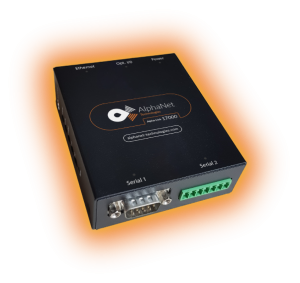Implementing a Modbus RTU Converter
The Modbus RTU converter is an essential device used to convert Modbus RTU signals into a format understandable by other devices. But how exactly do you implement one?
Understanding Modbus RTU
Before diving into implementation, it’s vital to understand what Modbus RTU is. Modbus RTU (Remote Terminal Unit) is a compact, binary representation of the data in the standard Modbus protocol. It’s an efficient and straightforward method of data exchange between devices in an industrial setting.
Why Implement a Modbus RTU Converter
The need to implement a Modbus RTU converter arises when devices in your network do not support the Modbus RTU protocol. The converter translates the Modbus RTU data into a different protocol supported by the other devices. Think of it as a translator helping two people speak different languages to understand each other.
Components Needed for a Modbus RTU Converter
To implement a Modbus RTU converter, you’ll need a few key components:
Modbus RTU Converter Device
This device serves as the central unit that facilitates the conversion of Modbus RTU signals into another format.
Communication Device
This could be a computer, a PLC, or another device that will interact with the Modbus RTU converter.
Modbus RTU Protocol Software
This software allows you to program and manage the converter.
Step-By-Step Guide to Implementing a Modbus RTU Converter
Here’s a step-by-step guide to implementing a Modbus RTU converter:
Step 1: Gather Your Components
Before starting, make sure you have all the necessary components. This includes the Modbus RTU converter, a communication device, and the Modbus RTU protocol software.
Step 2: Set Up the Communication Device
Set up the communication device according to the manufacturer’s instructions. This might involve installing additional drivers or software.
Step 3: Install the Modbus RTU Converter
Next, install the Modbus RTU converter. Connect it to the communication device using the appropriate cables. Ensure the connections are secure.
Step 4: Configure the Modbus RTU Converter
Using the Modbus RTU protocol software, configure the converter. This usually involves setting up the communication parameters and the Modbus address.
Step 5: Connect the Modbus RTU Converter to the Network
Finally, connect the Modbus RTU converter to the network. Check to ensure that it’s working correctly and that data is being converted as expected.
Common Challenges and Solutions
Despite your best efforts, you may encounter some common challenges when implementing a Modbus RTU converter.
Addressing Communication Errors
Communication errors can occur due to incorrect configuration. Double-check your settings to ensure everything is configured correctly.
Dealing with Power Supply Issues
Power supply issues can lead to intermittent operation of the converter. Check your power supply for any inconsistencies.
Concluding Thoughts
Implementing a Modbus RTU converter can enhance communication within your network. Though the process might seem daunting, following this guide will simplify it. So go ahead, take the plunge, and bring enhanced interoperability to your network.
FAQ
1. What is the function of a Modbus RTU converter?
A Modbus RTU converter translates Modbus RTU signals into a format that other devices can understand.
2. What are the essential components for implementing a Modbus RTU converter?
The key components are the Modbus RTU converter device, a communication device, and the Modbus RTU protocol software.
3. How do I troubleshoot communication errors with my Modbus RTU converter?
These errors often arise due to incorrect configuration. Double-check your settings to rectify the issue.
4. What could be causing power supply issues with my Modbus RTU converter?
Power supply issues could be due to inconsistencies with your power supply. Check it for any irregularities.
5. Why is it essential to implement a Modbus RTU converter?
It’s necessary when devices in your network don’t support the Modbus RTU protocol. It allows these devices to understand and process Modbus RTU data.
conversor modbus


